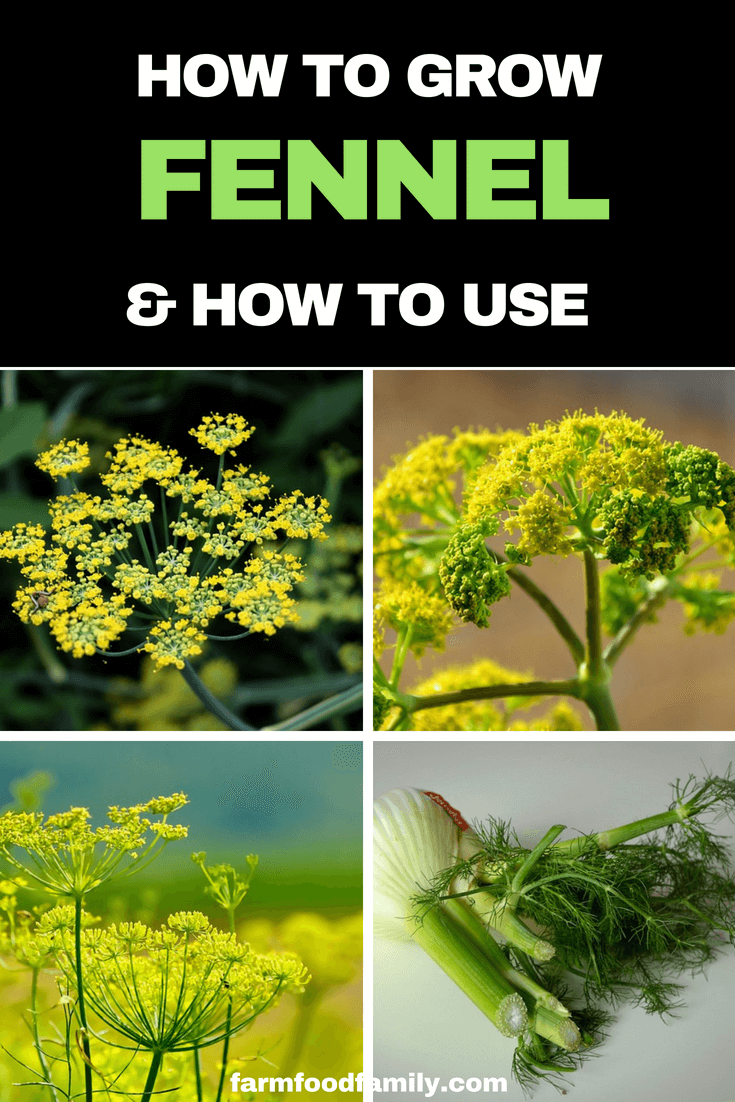Chocked full of Vitamin C, Potassium, Phosphorus and a full range of the B Vitamins, growing fennel is an edible gardener’s dream-come-true.
Below you will find a description of the fennel plant, including its height, hardiness, and flower; light, moisture, and soil requirements; cultivation tips for keeping your growing fennel healthy and tasty; our favorite varieties for fennel leaf and fennel bulb (they are different!); and some ideas for how to use fennel bulbs and fennel fronds in your home.
Special bonus section: suppressing fennel gone wild, a must-read section for those of you in Mediterranean climates (California, et al).
Description

A cousin of Queen Anne’s Lace, dill, and the humble carrot, fennel has a similar lacy quality to its foliage and the same umbel (umbrella-like) flowers, this time in brilliant yellow.
Fennel can reach 6 feet in height, especially when in flower, and returns each year after die back, making it an herbaceous perennial.
Fennel and anise: are closely related, but are not the same. Botanically, anise is Pimpinella anisum.
I’ve heard it argued that anise is the herb, and fennel a vegetable. No matter what your stance on that, save anise seeds for sweets and for some Asian dishes (anise is a member of the Chinese Five Spice). Use fennel for savory foods, like sausage-y dishes and stuffings.
Light, Moisture, and Soil Requirements
Did you know? This is the plant with which Prometheus is said to have used to steal fire from the gods! This Greek and Roman heritage also foretells its ideal cultivation:
Light: warm summer sun, 6 hours or more a day is ideal.
Moisture: moderate to dry moisture
Soil: relatively loose, gritty soils. You in clay country? Dig in last year’s leaves and lots of sand. In fact, consider a pot.
While some soil nutrition is necessary, this isn’t a plant that will beg you for the mercy of side-dressing fertilizer. Save that toil for the more grateful.
Cultivation Tips for Growing Fennel
https://www.youtube.com/watch?v=wLfm8uQTXEE
Starting from seed, seedling, or a root cutting all works, with root division possibly being the easiest.
Speaking of seed, you’ll want to snip the (edible!) flowers before they go to seed. You also need to place fennel far from dill in your yard, as the two will cross pollinate and create an odd tasting seed that will NOT improve your pickling recipes.
Growing fennel: Given the “invasive if the soil is right” (California) and “needs major sand and grit additions if the soil is wrong”(east coast clay) stance of this plant, it’s a fair bet for a large container.
Varieties to Try

For Fennel Bulb: the best bulbs come from varieties labeled finocchio or Florence. These slightly stockier plants hold a sweeter taste in the thick, inflated leaf bases.
For Fennel Fronds: ‘Purpureum’ fennel, also known as ‘bronze-leaved’ or ‘smoky’ fennel offers purple, copper, and bronze-toned foliage with the original vibrant yellow flowers. Not just pretty, these super tasty varieties are great in salads. The color is helpful in the kitchen when you’ve harvested a basket full of herbs and need to distinguish it from the dill.
Uses of Fennel

Fennel seeds and foliage are a main-stay in cuisines from the Mediterranean to the Indian sub-continent. Personally, I never leave an Indian restaurant without grabbing a handful of seed on my way out. Consider them a digestif.
Fennel bulb can be eaten cooked or raw; it was an acquired taste for me, but my friend Julie took to it like a duck to water. We’ll get some recipes up here soon to help you braise it properly.
Is Your Fennel Running Amok?
Here’s some tips, plus a link to the California Invasive Plant Council page on fennel.
– don’t cut it while it’s in seed. That just scatters them further.
– like most other invasive plants, fennel dashes into disturbed spots and sets up shop super quick. This is a huge argument to not abandon disturbed soil. Get in there and spread your preferred fast germinating seeds ASAP. This goes for herbicide use too. Never just Round-up and walk away, reseed within hours. Nature abhors a vacuum and will fill that if you don’t.
– if you do feel you need to spray it, early spring is the time. Later in the summer it’ll take far more spray to be anywhere near as effective. Bad for the planet, bad for your wallet.
– digging it up by hand is the most effective. It is also the most labor intensive. See if your sports team will count this as exercise time for your team-wide fitness challenge.


